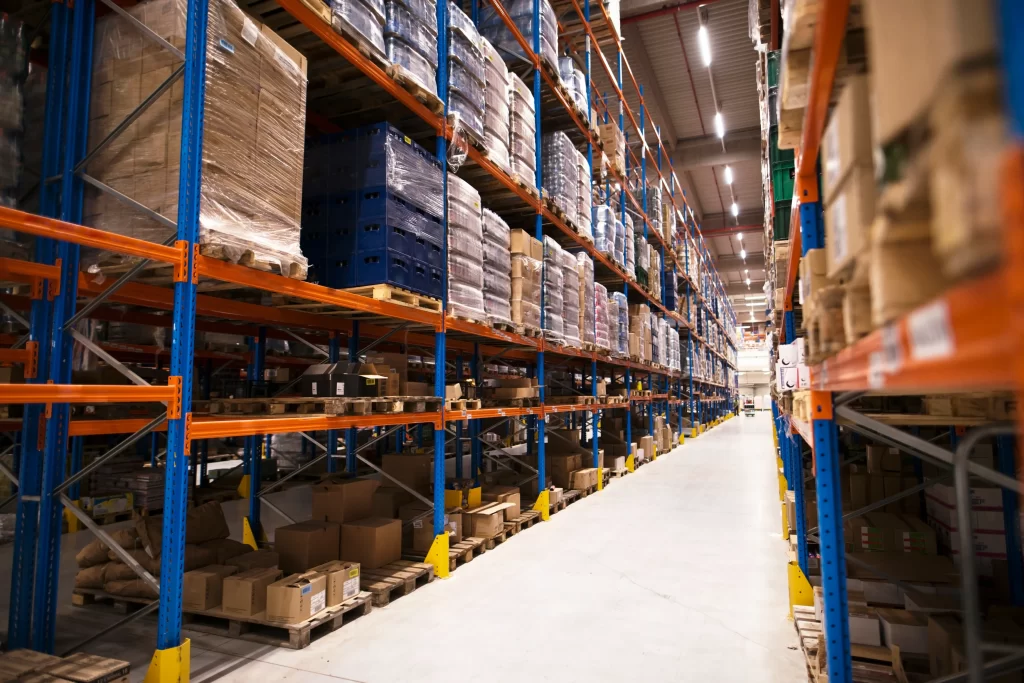When it comes to warehouse operations, safety should be the top priority. With so many moving parts—literally and figuratively—a safe warehouse environment ensures not just the wellbeing of your employees but also the efficiency of your business. Whether you’re overseeing a small storage facility or a massive distribution center, understanding and implementing warehouse safety standards is crucial. In this blog post, we will explore all you need to know about warehouse safety standards, particularly focusing on Quebec’s regulations. Let’s dive in and make your warehouse safer and more efficient.

The Importance of Warehouse Safety
Warehouse safety isn’t just a regulatory requirement; it’s a necessity. A safe work environment minimizes the risk of accidents, promotes employee morale, and enhances productivity. Think about it—when your employees feel safe, they’re more likely to be engaged and efficient in their roles.
Real Consequences: Ignoring safety standards can have real and devastating consequences. Workers can suffer from injuries, companies may face legal penalties, and the overall business could incur significant financial losses.
Legal Obligations: Adhering to warehouse safety standards is not optional. In Quebec, for example, the CNESST (Commission des normes, de l’équité, de la santé et de la sécurité du travail) mandates specific guidelines that businesses must follow. Compliance ensures you avoid legal ramifications and create a safe environment for everyone.
Employee Wellbeing: A focus on safety shows your employees that you care about them. This can lead to higher job satisfaction and lower turnover rates.
Understanding CSA 344-8.1.2
One of the pivotal safety standards in Quebec is the CSA 344-8.1.2, which emphasizes the importance of regular inspections of pallet racks. Over time, these racks can weaken due to constant use, making inspections crucial.
Routine Inspections: According to CSA 344-8.1.2, regular inspections should be a part of your standard operating procedures. This includes both routine checks by staff and more specialized inspections by experts.
Specialized Oversight: For a more detailed inspection, experts trained in structural engineering and pallet rack inspection procedures should be involved. This ensures that any underlying issues are identified and resolved promptly.
Documentation: Keep detailed records of all inspections and any subsequent actions taken. This not only helps in compliance but also in maintaining a history of your warehouse’s structural integrity.
Law C-21 and Its Implications
Quebec’s Law C-21 carries substantial weight when it comes to workplace safety. This law holds organizations and their employees criminally liable for injuries or fatalities that occur due to negligence.
Responsibility: Law C-21 places the onus of safety squarely on both the organization and its employees. This means everyone has a role to play in maintaining a safe work environment.
Consequences: Failure to comply with safety standards under Law C-21 can result in significant legal repercussions, including criminal charges. This makes adhering to safety standards not just a moral obligation but a legal necessity.
Proactive Measures: Implementing robust safety protocols and regular training can help prevent accidents and ensure compliance with Law C-21.
Implementing Safety Training Programs
Training is the backbone of a safe warehouse environment. Regular training ensures that all employees are aware of the safety protocols and know how to handle emergencies.
Initial Training: New hires should undergo comprehensive safety training before they start working. This sets the standard for what is expected from them in terms of safety.
Ongoing Education: Periodic refresher courses should be conducted to keep everyone updated on new safety protocols and standards. This also helps in reinforcing the importance of safety.
Emergency Drills: Conduct regular emergency drills to ensure that everyone knows what to do in case of an accident or emergency. This can include fire drills, evacuation procedures, and first-aid training.
Risk Assessment and Hazard Identification
Identifying potential hazards and assessing risks is a proactive approach to warehouse safety. Regular risk assessments can help in identifying areas that need improvement.
Identify Hazards: Walk through your warehouse and identify potential hazards. This can include everything from uneven floors to improperly stored materials.
Assess Risks: Once hazards are identified, assess the risk associated with each. This involves evaluating how likely it is for an accident to occur and the potential severity of such an accident.
Mitigation Strategies: Develop strategies to mitigate the identified risks. This can include everything from rearranging storage layouts to implementing new safety protocols.
The Role of Personal Protective Equipment (PPE)
Personal Protective Equipment (PPE) is a critical component of warehouse safety. Ensuring that employees wear the appropriate PPE can prevent a multitude of injuries.
Types of PPE: Common types of PPE in warehouses include helmets, gloves, safety goggles, and high-visibility vests. Each type of PPE serves a specific purpose and should be used accordingly.
Proper Usage: Training employees on the proper usage of PPE is essential. This includes how to wear it correctly and when it should be used.
Maintenance: Regularly inspect PPE to ensure that it is in good condition. Damaged or worn-out equipment should be replaced immediately.
Safety Signage and Warnings
Safety signs are an effective way to communicate hazards and safety instructions. Proper signage can prevent accidents and ensure compliance with safety standards.
Types of Signs: Common types of safety signs in warehouses include hazard warnings, mandatory instructions, and emergency exit signs. Each sign serves a specific purpose and should be placed accordingly.
Visibility: Ensure that safety signs are easily visible and readable. This includes placing them at eye level and in well-lit areas.
Regular Updates: Periodically review and update safety signs to ensure they are still relevant and in good condition.
Forklift Safety
Forklifts are commonly used in warehouses, and proper safety protocols are essential to prevent accidents. This includes regular maintenance and operator training.
Operator Training: Forklift operators should undergo comprehensive training before they are allowed to operate the machinery. This includes both theoretical and practical training.
Maintenance: Regular maintenance of forklifts is essential to ensure they are in good working condition. This includes routine checks and servicing.
Safe Operation: Implement protocols for safe forklift operation. This includes speed limits, designated routes, and proper loading techniques.
Ergonomics and Manual Handling
Ergonomics play a crucial role in preventing injuries related to manual handling. Proper lifting techniques and ergonomic equipment can reduce the risk of musculoskeletal disorders.
Training: Train employees on proper lifting techniques to prevent injuries. This includes bending at the knees and keeping the back straight.
Ergonomic Equipment: Provide ergonomic equipment such as lifting aids and adjustable workstations. This can help in reducing the physical strain on employees.
Regular Breaks: Encourage employees to take regular breaks to prevent fatigue. This can help in reducing the risk of injuries related to manual handling.
Fire Safety Measures
Fire safety is a critical aspect of warehouse safety. Implementing proper fire safety measures can prevent fires and ensure a quick response in case of an emergency.
Fire Extinguishers: Ensure that fire extinguishers are readily available and properly maintained. Employees should be trained on how to use them effectively.
Evacuation Plans: Develop and regularly update evacuation plans. Conduct regular fire drills to ensure that everyone knows what to do in case of a fire.
Fire Prevention: Implement fire prevention measures such as proper storage of flammable materials and regular inspection of electrical systems.
First Aid and Emergency Response
Having a robust first aid and emergency response plan is essential in ensuring the safety of employees. This includes having trained first aiders and proper emergency equipment.
First Aid Kits: Ensure that first aid kits are readily available and stocked with necessary supplies. Regularly check and replenish the kits.
Trained First Aiders: Have trained first aiders on-site at all times. Regularly update their training to ensure they are prepared for any emergency.
Emergency Equipment: Keep emergency equipment such as defibrillators and stretchers readily available. Ensure that employees know where to find and how to use this equipment.
Continuous Improvement and Safety Audits
Safety is an ongoing process, and continuous improvement is key to maintaining a safe warehouse environment. Regular safety audits can help in identifying areas for improvement.
Regular Audits: Conduct regular safety audits to assess the effectiveness of safety protocols. This includes checking for compliance with safety standards and identifying areas for improvement.
Employee Feedback: Encourage employees to provide feedback on safety measures. This can help in identifying potential issues that may not be apparent during audits.
Implement Changes: Use the findings from safety audits and employee feedback to implement changes. Continuously monitor and update safety protocols to ensure they remain effective.

Conclusion
Warehouse safety is not just about compliance; it’s about creating a work environment where employees feel safe and valued. By understanding and implementing warehouse safety standards, you can prevent accidents, enhance productivity, and ensure the wellbeing of your employees. Whether it’s through regular training, proper use of PPE, or continuous improvement, every step you take towards safety is a step towards a better workplace. For those looking to ensure their warehouse meets the highest safety standards, consider consulting with expert services like Entreprises DSS. Let’s make safety a priority and create a safer work environment for everyone.
For more information on how to improve warehouse safety, feel free to reach out to us or consult with our experts at Entreprises DSS. Together, we can make a significant difference in workplace safety.
